Introduction
Any time people discuss the 2007 global financial crisis, the housing issues emerge. The simple term is that between 2000 and 2007, banks across the world that should practice borrower regulations gave out many loans than any other time in history.
When this happened, the banks had the assurance that many people would repay the loans at high interest rates. It meant that banks owned fixed assets in people who promised to repay the loans over a certain period. Since banks made a lot of money in the 7-year period, they began acquiring land for construction of industrial and residential properties.
According to Matthews, Giuliodori, and Mishkin 2013 (2013, p. 24), the mortgage services offered by banks were very expensive, but the banks created a necessity in the real estate industry, making it almost impossible to ignore the need for home ownership. Life became unbearable for citizens who had to repay loans at overwhelmingly high interest rates while struggling to acquire the expensive mortgage services.
The overburdened citizens who acquired the loan could no longer pay back the money to the bank, as well as pay the mortgage offered. This led to a global financial crisis whose impact people still feel today. The period led to the collapse of major real estate industries in the world including those in the US and the Middle East.
Causes of the global financial crisis that started in 2007
The factors that caused the global financial crisis of 2007 remain debatable across the world. Three significant elements stand out; a transition in one led to another component. For instance, bank lending led to an increase in the cost of mortgage services while the same led to a decrease in the number of borrowers capable of repaying the loans.
When one problem transformed into another, it became evident that things would get out of hand for the world 7 years later. For instance, by 2000, most banks made a lot of money from customer savings and loan acquisition. It became clear that people developed consciousness toward investment in property, especially in the real estate market.
Between 2000 and 2007, banks made profits totalling $44 trillion by investing with developing countries (Thomas 2006, p. 40). Evidently, the IMF made the greatest amount of money by acquiring funds from the developing countries that borrowed the funds. In addition, countries sold out bonds to other nations and increased income mostly used for infrastructural development.
The 7-year period marked a very busy financial session for most banks, countries, as well as individuals. For instance, the US Treasury Bonds received an overwhelming attention from developing countries, meaning that they increased their debt margins largely in the 7-year period.
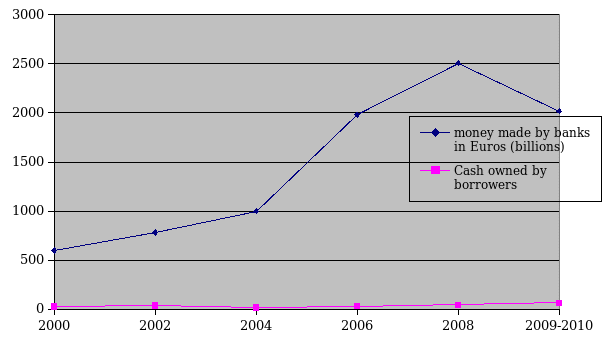
(Matthews et al. 2013, p. 33)
The three reasons mostly discussed when the topic comes up are illustrated below.
Trade irregularities and negligent lending procedures
When people acquire loans from banks, a few of them take into consideration the long-term effects of their actions. On the other hand, banks get an opportunity to make money from the interests earned. Recently, most people displayed an interest in suing banks for including hidden charges in loans in order to service the clients.
Consequently, most banks asked clients to pay for the stamp duty even when the charge remained largely irrelevant. In essence, banks made a lot of money out of the ignorance of many customers who sought loan services (Thomas 2006, p. 32). While this happened across different countries, few regulatory organisations paid attention to the negligent lending rates.
Known as the credit crunch many people would understand why lending was very easy for people. When banks introduced credit cards, most people did not believe that they had the ability to borrow money and repay it after a particular period even when they did not have a stable salary. Credit cards increased the lending and credit acquisition rates by a large margin and this explains how many banks made a lot of money between 2000 and 2007.
Increased borrowing led to an increase in the household debt especially in first world countries. From an economic perspective, micro-economical elements normally influence macroeconomics. In essence, an increase in household debt within a large population has a similar impact on the national debt.
When not controlled, issues of household debts become big and transform into a national and later international debt as it happened by the end of 2007. It was clear that the credit crunch would later affect the subprime mortgage rates, and the world had an opportunity to change things even though the regulatory authorities including the Central Reserve, the World Bank, and the International Monetary Fund assumed that normalcy would return after sometimes (Cecchetti 2006, p. 58).
In the U.S., banks made mortgage services attractive because of the low interest rates offered. U.S. citizens made a rush into home acquisition, and most banks run losses because the returns from the housing industry did not match the investment. In China, the country had to increase the prices of real estate in order to make house and business outlets unaffordable to a majority of the citizens.
Evidently, immigrants could not own property in the country, and this had a significant impact on its foreign relations. According to the Federal Reserve chairperson, Ben Bernanke late intervention, irregularities by financial bodies, and susceptibility of the credit and mortgage facilities were major causes of the financial crisis. Poor regulation resulted from an increase in the rate of new service delivery within a short period.
For instance, before developed countries could absorb the credit culture, the banks rolled out the subprime mortgage services master plan. The plan failed to achieve its objectives, and it was evident that micro-financial institutions had to increase in order to save the private sector from collapse.
Housing policies
Home ownership or acquisition of a business complex is the best think that could happen to a first time real estate owner. Few people understood that most real estate businesses operated based on loans acquired from different banks across the world. Arguably, when people borrow from the developed world, the national problems are likely to become global concerns.
Normally, countries with the highest Gross Domestic Products contribute the highest amount of financial resources to global institutions such as the World Bank and the IMF. When countries such as the U.S. increase their credit acquisition rates in order to purchase affordable housing, the rest of the developing world suffers from lack of donor aid, military assistance, and other NGO programmes.
Additionally, when countries depend on each other, they borrow cultures. The credit crunch and the real estate bubble became a global problem because the houses built by various companies or individuals became inhabitable after an increase in the cost of housing. The real estate bubble in the U.S. and Europe are almost self-explanatory (Mishkin 2010, p. 39).
As a result, banks in the U.S. and Europe increased lending rates with limited austerity for borrowers to pay back the resources. It means that most people acquired loans in order to finance their real estate prospects across the globe. While this happened, different people showed interest in the real estate market whose cost increased tremendously by December 2007. Banks and governments among other stakeholders completely funded and operated the real estate businesses (Cecchetti 2006, p. 71).
When the bank lending rates began to increase in 2007, the real estate businesses had to recover the money they invested in the industry while trying to offer the most affordable houses to people and businesses. As it is, about half of the constructed houses, offices, recreational facilities, and business complexes remain unoccupied.
The real estate owners escalated the prices of home ownership because the banks increased the mortgage rates making the subprime mortgage project the first one to collapse. The tenants would not help the real estate owners to recover the money they borrowed from the banks and invested in the industry.
It explains why many real estate businesses and houses remain unoccupied in China. The countries that failed to increase the prices in the real estate business experienced a real estate bubble like the U.S. and the Middle East.
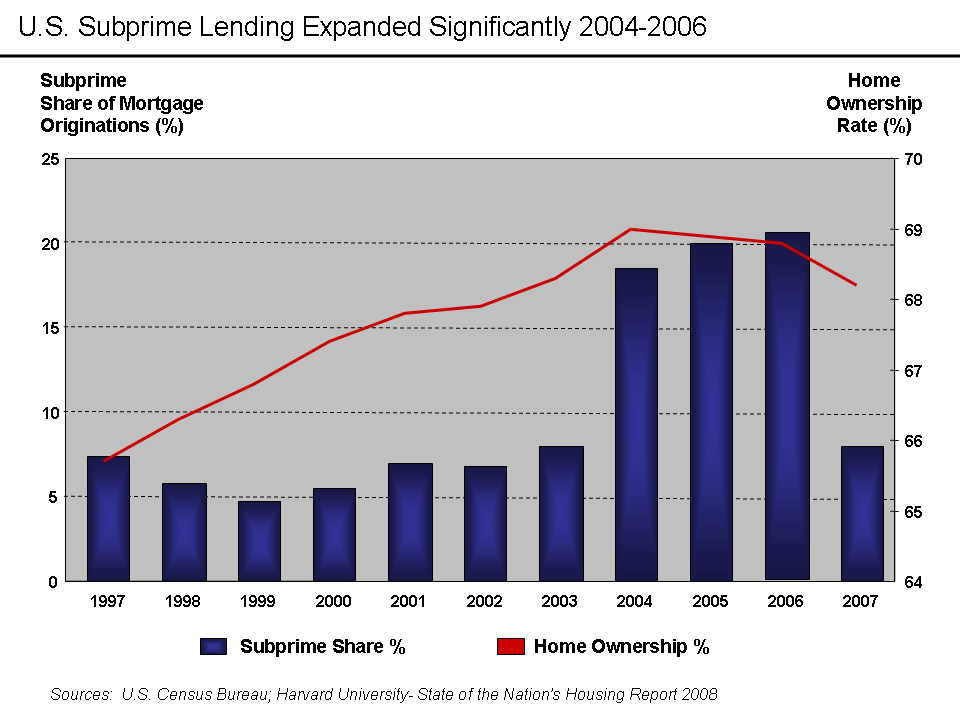
(Matthews et al. 2013, p. 44)
Arguably, different people strived to fulfil their interests during the crisis. Known as the balance sheet recession, it was clear that people who acquired credit facilities experienced the most difficult time in repaying the loans. The interest rates increased without any form of regulation, and the monetary bodies played a limited role in controlling the credit crunch.
By 2008, most real estate owners feared that the banks they owed money would reclaim the property as collateral for the loans they owed such institutions (Matthews et al. 2013, p. 47). As such, making houses affordable increased the number of people interested in house ownership.
In the end, inability to pay the loans made the owners of the houses to increase the prices of home ownership in order to recover the money. The prospective clients who equally had loans to pay could not afford houses that stayed without clients making the houses unproductive to developed economies. For instance, people had to pay an additional 24% to own houses in the US.
Banks that offered credit facilities run at a huge loss of about $450 million by the end of 2008 because the government and other key players in the real estate market did not respond adequately to the increased lending rates for acquisition of real estate property.
Laxity in regulation by renowned financial institutions in the world
Non-depository instructions such as the World Bank and the IMF play the role of oversight for other banks. Additionally, the U.S. has the Federal Reserve, which operates independently and oversees the lending and credit facilities offered by depository institutions.
Arguably, the institutions never played a good oversight role if banks took advantage of the increase in borrowing rates to increase interest rates. In financial terms, inability to control risks in borrowing leads to a financial crisis (Matthews et al. 2013, p. 53). Most banks provided credit facilities at very high interest rates. Others provided low interest rates leading to uncontrollable customer stream.
Micro finance institutions emerged to provide risk financial solutions to desperate real estate acquirers explaining why some financial institutions including Lehman Brothers experienced a foreclosure in 2008. Bear Stearns was the first financial institution to declare insolvency by the third month of 2008.
Banks began working on debt reduction in order to compensate for various monies lost through the careless cash lending procedures. The World Bank and the IMF had to deal with the new concept of real estate ownership in Europe and the U.S. and it was very difficult to conceive that two of the wealthiest continents would experience a credit crunch.
Critics blamed the Federal Reserve for lack of intervention when the U.S. tremendously reduced the interest rates for acquisition of mortgage services (Thomas 2006, p. 32). Between 2000 and 2001, it was already obvious that the U.S. would experience a recession if people continue to borrow money from banks in order to own homes.
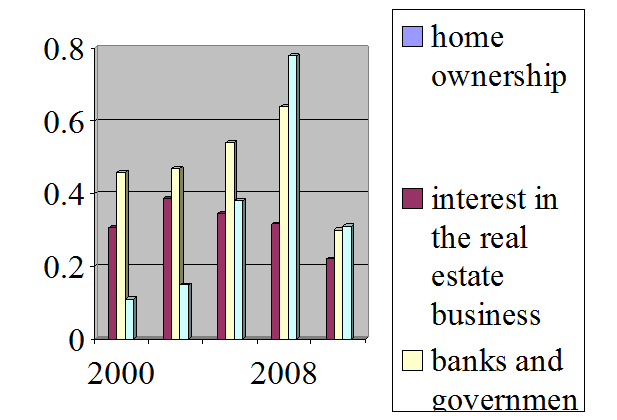
(Matthews et al. 2013, p. 57)
In Europe, financial consultants predicted that trade imbalances across the world would result in the European inflation. Arguably, Europe invested most resources in developing countries while increasing the borrowing rates for people whose prospects of returning the loans were close to none.
Other risks that the IMF and the World Bank ignored in the banking sector included an overwhelming increase in internet banking services, credit facilities, and innovative techniques in the industry. It meant that banks strived at increasing customer goodwill by providing services with limited security.
Being in a CRB record was no longer a problem for most bank clients because all they wanted was money, which they could get easily. Until today, people do not have to make physical visits to banking halls in order to carry out business transactions.
The IMF and the World Bank found it difficult to intervene in a project initiated by the developed countries that made major fiscal contributions to the non-depository banks. Provision of oversight should apply to all people and countries irrespective of the statuses held by the relevant institutions in the world. Sparing the U.S for a bad policy only encourages the country to implement future policies that would affect the entire world.
The U.S. is a superpower and any decisions made by the country at a domestic level have the ability to affect the entire world. If the non-depository financial entities played a good role, then the world would not experience the worst scenario of a global crunch in a period of 7 years. At least in each stage of development, the oversight institutions had the ability to provide oversight (Matthews et al. 2013, p. 88).
Consequences
The consequences of the global financial crisis were obvious for people, investment institutions, and non-depository facilities. The World Bank, the Federal Reserve, and the IMF faced reputation damage for lack of the ability to control the credit crunch through their banking regulations. In the U.S. and Europe, banks had to increase lending rates in order to reduce the number of loan acquirers.
In addition, people had to reduce their expenditure and borrowing rates in order to cover up for the losses faced by depository banks. Banks in the U.S., governments, and private investors could no longer finance the real estate business that faced a bubble. Most businesses had to lay off workers because they lacked the ability to pay wages since they never made a good income.
Between 2001 and 2009, the world recorded the highest rate of unemployment. The scenario emerged because financial institutions could no longer withstand the debacle; as a result, they had to close down. Later intervention by the IMF and the World Bank to coerce countries to pay back debts bore limited efforts since most countries are likely to honour the call by 2020.
Besides loss of jobs and housing problems, people had to spend a lot in household goods and services. An increase in the amount of household expenditure normally denotes a high GDP, but in this case, it displayed the austerity in the repayment of national debts acquired during the credit crunch (Matthews et al. 2013, p. 109).
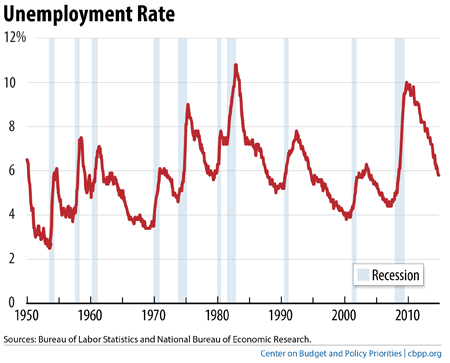
(Matthews et al. 2013, p. 118)
Between 2007 and 2009, the global oil prices increased a lot. According to economists, the increase in oil prices contributed towards the global financial recession. Other people feel that the increase in oil prices resulted from the global financial crisis. The two impacted on each other in different ways.
About the same period of the GFC, countries in the Persian Gulf and the U.A.E had sore political relationships with the West and the U.S. it meant that some of the world’s most powerful economies that controlled fuel prices lacked the commodity.
Consequently, OPEC provided little hope for intervention meaning that people had to bear with the consequences of the GFC that was above the control of the oil regulatory authority. Other consequences of the GFC included reduction in immigration cases between Mexico and the U.S. Most illegal immigrants never found value in living in the U.S. and they had to go back to Mexico whose cost of living proved relatively affordable.
From a critical point of view, the reduction in immigrant population reduced labour force in the U.S. causing a reduction in production, which resulted in the GFC. As such, the theories explaining the GFC are many depending on the most viable account for different countries (Mishkin 2010, p. 56).
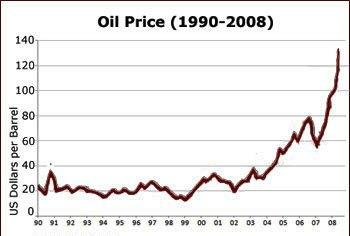
(Matthews et al. 2013, p. 124)
The monetary theory
According to the monetary theory, countries have financial policies that can help them evade recession by maximising on strengths and reducing weaknesses. Each country is unique and capable of solving its problems without the intervention of another state. Arguably, the failure of the U.S. or Europe should not determine the failure of a developing country.
Countries have the intellectual capability to come up with foreign investment policies that do not affect the stabilities of the developing nations. When countries understand that their assets and liabilities are unique and would benefit the community in the future, then it makes no sense to depend on other countries for financial aid.
Consultants, central banks in developing states, and the Federal Reserve in the U.S. always control monetary policies of the respective countries. They determine the national income, the national expenditure, and the risks of investment before providing expert opinion to institutions.
The non-depository institutions such as the World Bank never provided the oversight requisite for managing the financial resources at a global level (Howells and Bain 2008, p. 90). They had the opportunity to liaise with central banks in the developing countries and the Federal Reserve in order to find a solution for the global recession.
For instance, the central bank in a developing state has the capability of approaching the credit and innovative facilities. The banks also regulate interest rates for various banks to ensure that loan acquirers get the best deal in the market. With such systems in place, it was difficult to conceive how negligence in interest rating affected the economy of the world for 7 years.
In this aspect, both the regulatory or non-depository facilities had the capability of controlling the real estate bubble in collaboration with the agencies that acquired credit facilities for the industry. Questions of over-production and less consumption at a global level should not occur because each country has an organisation that controls the flow of resources within its territories. Finally, corporate organisations cannot conduct leveraging when bodies that provide oversight look on and seethe country make poor financial decisions (Ball 2008, p. 18).
Conclusion
In retrospect, there are many accounts that strive to explain the global financial crisis. The list is endless; however, the good thing is that the world overcame the challenge boldly. Today, most countries strive to create a balance between risk management, introduction of innovative banking systems, and avoidance of a GFC.
Through development of globally accepted financial foreign policies, it will be very easy for countries to avoid falling into the same trap of the GFC. The regulatory non-depository facilities are the only source of hope for the world, and they should perform at their best.
References
Ball, L 2008, Money, banking, and financial markets, Worth Publishers, New York, NY.
Cecchetti, S. G 2006, Money, banking, and financial markets, McGraw-Hill/Irwin, Boston.
Howells, P., and Bain, K 2008, The economics of money, banking and finance: A European text (4th ed.), Prentice Hall/Financial Times, Harlow, England.
Matthews, K., Giuliodori, M., and Mishkin, F. S 2013, The Economics of Money, Banking and Financial Markets (10th ed.), Pearson, Boston, MA.
Mishkin, F. S 2010, The economics of money, banking, and financial markets (9th ed.), Addison-Wesley, Reading, MA.
Thomas, L. B 2006, Money, banking, and financial markets, South-Western, Mason, OH.